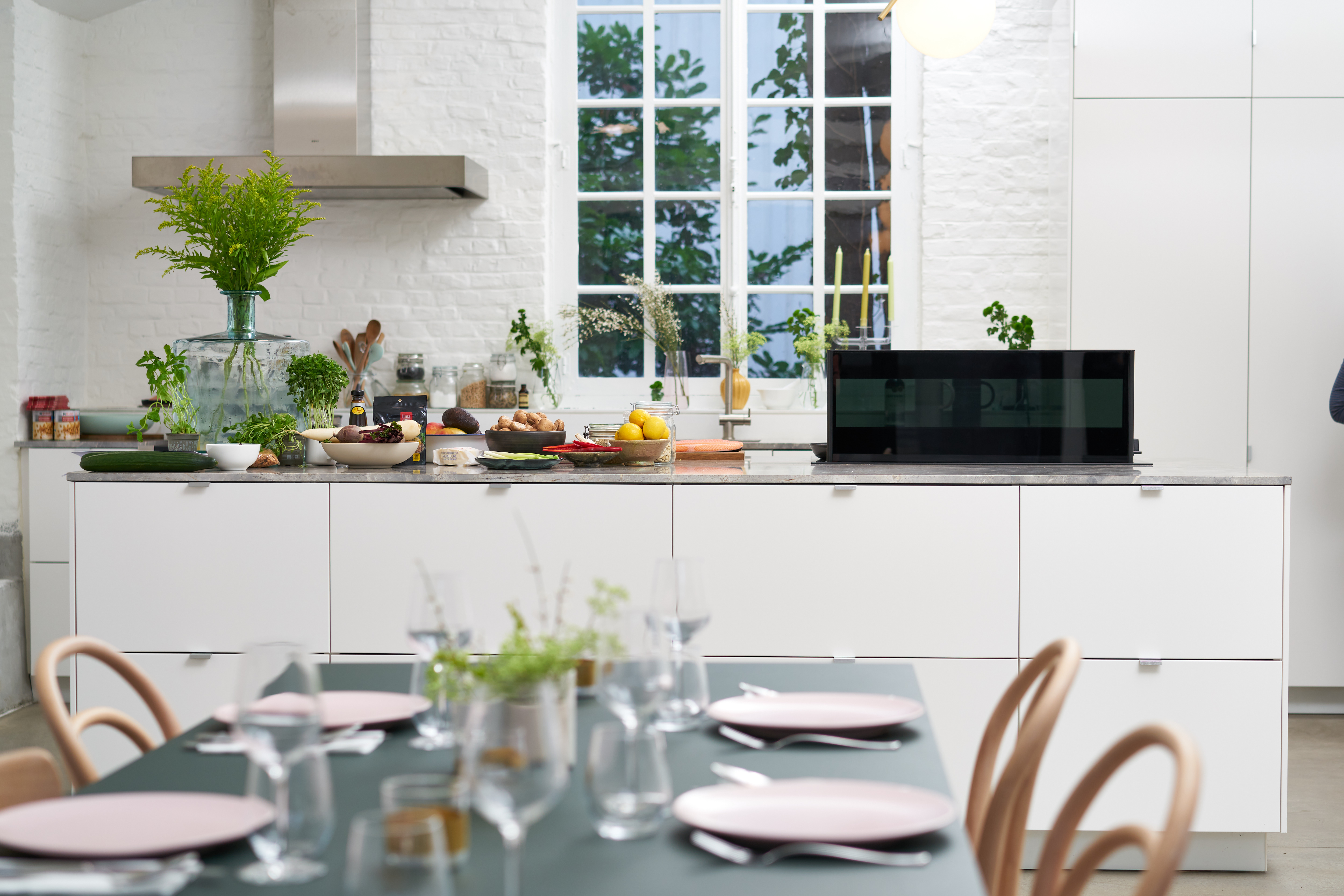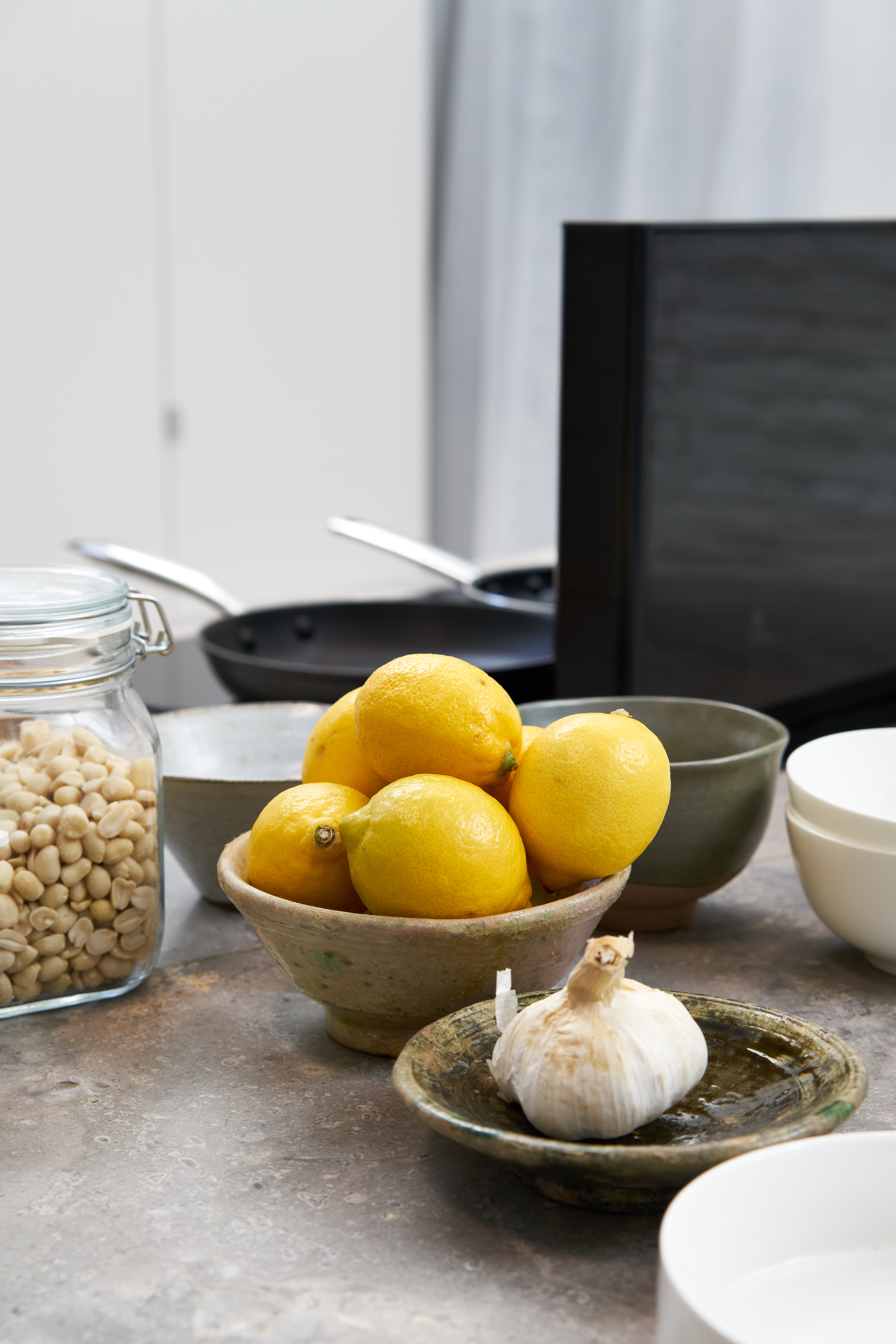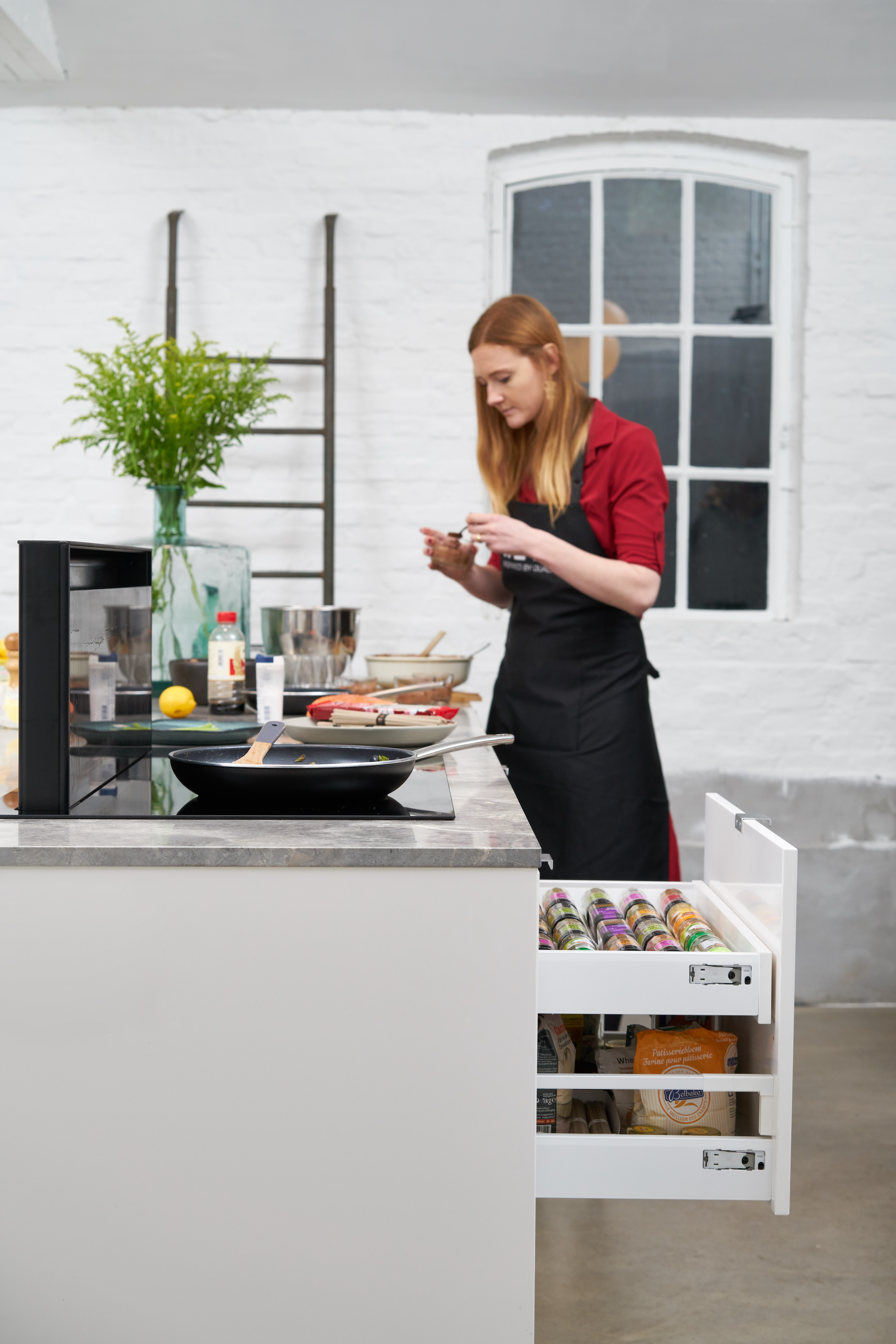Your new kitchen in 7 questions
Think, this is going to be your kitchen for the next few years.
Finally the time has come: you’re about to build a brand new kitchen, or you’re thoroughly renovating your old one. Although the kitchen is becoming more and more of a living space, it still needs to be a functional place where you can cook/work quickly and efficiently. The following 7 questions can help you make the right choices. Or visit the kitchen expert well prepared.

1. How big is the space? This is probably the most important question, as it will influence all the others; a narrow rectangular space or a large square one – a big difference.
2. Fix your budget in advance and check all your decisions and choices against it.
3. The layout of your kitchen: to define this, consider these 5 ‘zones’ that you find in every kitchen:
- Sink and garbage bin - mostly close to each other
- Cooking zone, with the cooker in the central position and the oven never far away.
- Work surface: this is where you do all the preparatory work, so ideally it should be situated between the sink and the cooking zone.
- Stock: first of all the fridge, where you store products that require cooling. Additionally there is a cupboard for ‘dry’ produce.
- Storage: for material you don’t use on a daily basis.
Good to know: there is something called the ‘kitchen triangle’ that links stock, cooking zone and sink. The work surface is at best situated between sink and cooking zone.
4. The choice of your appliances and devices is very important. Very often it is the last thing we think about, but the connections and the invisible ‘channelling’ impact the construction of your kitchen drastically. Make a balanced choice and gather all the information you can. Here are some basic appliances that every kitchen needs:

- Cooker hood (above the stove or integrated in the hob)
- Hob
- Fridge (positioned with its centre level with the work surface)
- Oven (preferably at eye level)
- Dishwasher (can be positioned at a lower level)
5. The shape of your kitchen is the next thing you’ll be looking at. Do consider where the connections are for gas, water, electricity …
These are the most common shapes – the names explain themselves:
- Straight kitchen: in a narrow rectangular space or a small studio
- L-shaped kitchen: can be built in almost every space. Very practical. Allows you to keep the kitchen triangle very small!
- U-shaped kitchen: the ideal combination of maximum work and storage space and a minimal cooking triangle. Make sure you have sufficient space to open drawers and cupboards.
- Island: probably the most popular, but needs a big space. The island separates the cooking area from the dining or living areas.
6. Now you can define which cabinets you want – make an inventory of all the material you need to store: pots, pans, cutlery, tableware, tools, appliances … this will help you decide on the following:
7. The top surface is very defining for the look and feel of your kitchen, so that also deserves some consideration:

- The choice of material: stainless steel or polished concrete for an industrial look, wood for warmth, or plywood with a laminate finish for its modest pricing
- Colour is obviously of the essence – stainless steel and concrete offer no options, but wood, laminate or composite obviously do
- And finally the height of the work surface is very important, especially for the main user of the kitchen. Is he/she smaller than 1.70 m, the work surface should be at 90 cm height. If the ‘chef’ is taller than 1.70 m, go for a 95 cm height.
Tip: The following practical product guide will help you choose your cooker hood and hob.
